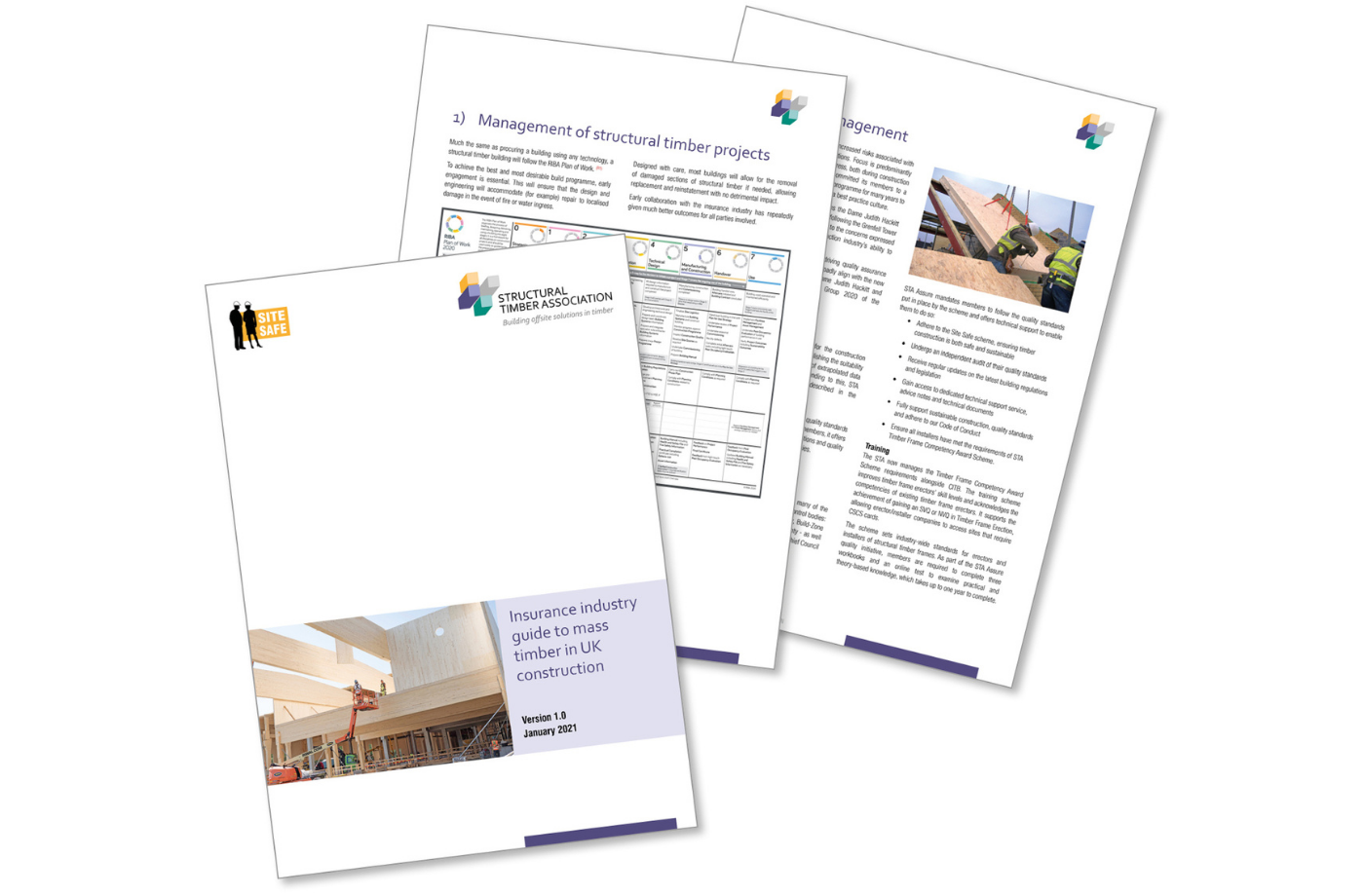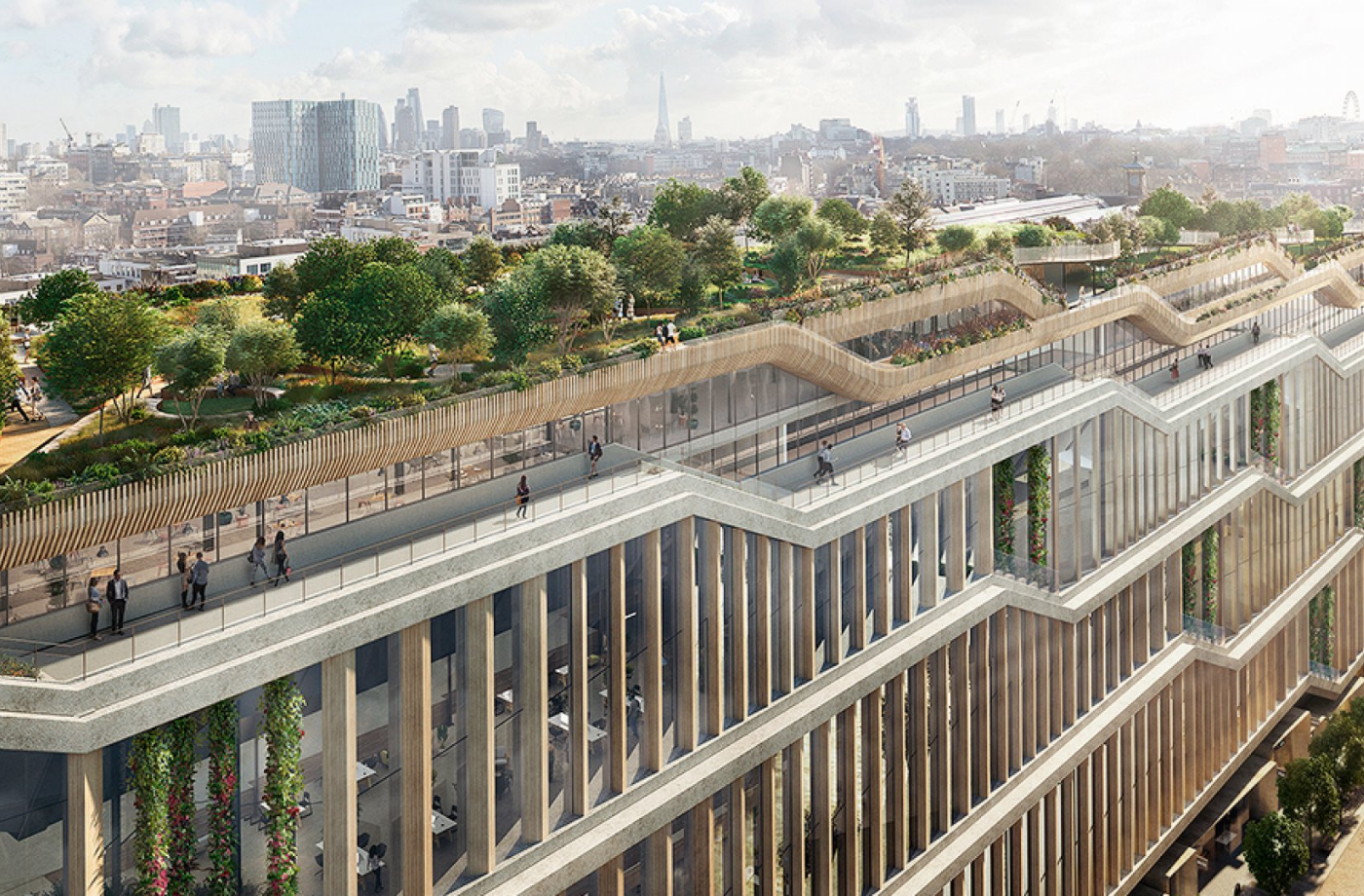The Structural Timber Association has recently published an insurance industry guide to mass timber in the UK. The purpose of this paper is to provide the reader with sufficient information to better understand the use of timber in construction from a risk management perspective.
This document has been broken down into six main sections: Management of structural timber projects, Risk management, Compliance, Structural timber and the built environment, Building Safety Bill 2020, STA technical document library. We’ll be covering each topic in turn on this website.
4. Structural timber and the built environment
Timber, as part of the circular economy, is the safest and most effective carbon store.
Currently, the construction industry represents around 10% of total UK carbon emissions and directly contributes to a further 47%. As a result, the industry finds itself in a position of great responsibility and influence with regards to the nation’s climate change efforts.
As trees grow, they naturally absorb carbon, which continues to be stored when the material is transformed into structural timber products. Timber absorbs and stores more carbon than it emits during processing and installation.
Engineered timber solutions act as an effective carbon store when used as part of a building. When the building has reached the end of its use, this stored carbon can either be re-used as fuel or will naturally filter back into the soil. By comparison, the use of concrete and steel within construction leads to considerably more energy and carbon usage.
To this end, a report published by Chatham House (Making Concrete Change: June 2018) shows that cement is the source of 4-8% of total global carbon dioxide emissions. Whereas more carbon dioxide is absorbed and stored within timber products than is emitted during its harvesting process, manufacturing and transportation combined.
When used instead of other building materials, a single cubic metre of timber will save around 0.8 tonnes of carbon dioxide emissions. With such strong green credentials, it’s clear to see why so many organisations are embracing timber. Not only does the material provide strength and aesthetic beauty, it also offers an effective solution in battling climate change.
Timber is an organic, natural material; wood can breathe and maintain a comfortable and healthy indoor climate. Recognising this, the French government recently announced new sustainability legislation to help make the country carbon-neutral by 2050. The new law, enforceable in 2022, states all new public buildings in France are built from at least 50% timber, or other natural materials.
Health and wellbeing is front and centre for many large corporations, such as Google, in trying to attract and keep the best staff in the industry.
The use of timber in construction is known to have numerous positive effects on health, proven in various studies. People working in environments with more wood are observed to show lowered heartbeat rates, a decreased perception of stress, decreased blood pressure and increased interaction. A closer connection to such a natural material can only help to promote a sense of wellbeing. In creating such environments, which employees clearly favour – and an increasing number of studies point to those workplaces being more productive, with lower rates of absenteeism and sickness.
The Structural Timber Association’s insurance industry guide to mass timber in the UK can be downloaded here.




